Here is a list of just some of the many excursions that you cantake by car, boat or on foot…
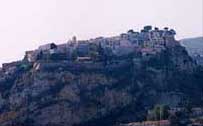 Castelmola
Castelmola
(25 minutes on foot)
You can make the trip to Castelmola on foot. Just follow the steps that begin just adjacent to the Guest House gate. Castelmola is an ancient medieval village, with a unique view, situated above Taormina, which formed the ancient Acropolis. Ancient monuments abound: from the ruins of the Norman castle, to the Chiesa Madre, and those of San Giorgio and San Biagio, part of the Saracens with the surrounding walls. In summary from this naturalistic vantagepoint you will appreciate and admire the beauty of the vast territory.
 Forza D`Agrò
Forza D`Agrò
(20 minutes by car)
At the end of Capo S. Alessio, on the extreme north east edge of the crown of Tauro, at 420 meters above sea level, rises the ancient land of Forza D’Agro‘. Deep ravines run around it with a bleak rosy serenity and infinite horizons surround it with a melancholic restful sweetness. Of special interest is the Norman Castle, which in 1876 was turned into a cemetery. Tombs had been placed in the most unexpected places, many are dug into the ground, and others rise high above the depressions. In 1989 the community of Forza D’Agro took steps to build another cemetery
in an area far from the center of town.
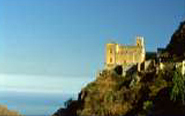 The mummies of Savoca
The mummies of Savoca
(thirty minutes by car)
Located on a hill 300 above sea level rises the ancient village of Savoca. Located in a basement of the sixteenth century Convento dei Cappuccini Fathers there is a crypt where the buried mummified remains of some of the notables of the ancient land of Savoca have been found. The method of mummification that was used seems to have been of Egyptian origin. In this process they used a natural method which began with the dehydrating of the remains using vinegar and fungus. The complete mummification of the cadavers took seventy days. The catacombs of Savoca are one of the “attractions” of Sicily, a tourist destination for many visitors. The historian Santo Lombardo has written a book about their history.
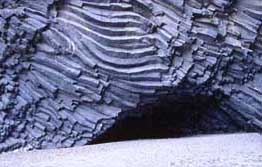 Gole dell’ Alcantara
Gole dell’ Alcantara
(20 minutes distance by car)
The short course of the Alcantara (an Arabic name, Al Qanrarah, which means bridge), a little more than forty kilometers in length, which originated from various springs near Floresta and then widened thanks to different currents of the Nebrodi, runs through the valley locked in by the hills of loam rock and sandstone that support Castiglione di Sicilia and Motta Camastra until finally flowing into the Ionian Sea. Thousands of years ago the valley was invaded by a powerful lava flow which gushed out of the outermost etneic craters, the Monte Moio, and did not stop until it reached the sea forming Capo Schiso’. In this manner the thick blanket of lava covered the old bed, which the river had dug out through the sandstone over the course of the centuries. But the water of the river, resuming its slow flow, in time engraved and smoothed walls more than 20 meters high, reaching its old sandstone bed and forming some suggestions of “gole” (throats) from the high basalt prism walls once curved, once lightly undulating, according to the modality of the cooling lava.
Being near Taormina, the “gole” are visited by many Italian as well as foreign tourists and consequently are not always a place of silence and tranquility. Because of the notable influx of tourists, at the entrance of the “gole” a large parking lot and a horrible cement elevator have been built. Nevertheless the “gole” still remain an interesting environment. It is imperative to follow the suggested route because the rising of the river starting from the beginning until you are waist deep presents a challenge to swimming. It is recommended for expert excursionists who are very good swimmers. You will need a bathing suit and a pair of tennis shoes to be worn without socks. Beware of the temperature of the water!
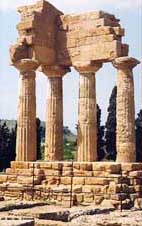 Agrigento (The Valley of the Temples)
Agrigento (The Valley of the Temples)
(3 hours distance by car)
The Valley of the Temples is that which remains of the splendid Akragas, founded at the beginning of the sixth century A.C. by a colony of rodio-cretins, a great yield of the achievements of the heroes, legends and illustrious people which became one of the most feared and richest powers of the Mediterranean. Pindar describes it as “…the most beautiful city of the mortals…” where the inhabitants “…lived their life as if they were going to die tomorrow and built their houses as if they were immortal…” Over the course of the centuries, the city had been dominated by the Carthaginians, Romans, Goths, Byzantines, Muslims and Normans each one of which left their own imprint. Today, the Valley of the Temples is the target for thousands of tourists coming from all over the world to admire this splendid Patrimony of Humanity.
Etna
(1 hour distance by car)
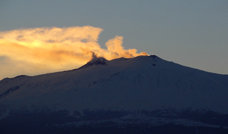 Etna is the largest volcano in Europe (its volume is at least 350 Km3), one of the most active volcanoes on earth (in terms of productivity and frequency of eruption). This activity is characterized by alternating persistent periods of activity from the upper area, major eruptions from the center can be observed on the sides of the volcano every 2 – 20 years. Another detail about Etna worthy of note is that it can be considered feminine in gender, which is not in conformity with the usual way of considering mountains in Europe. Etna is the big “Mamma” (when you observe it with its small lateral cones formed by eruptions, the comparison is well understood) which gives and takes and which gives origin to this distinctive part of the world. Etna is distinct for many reasons. Foremost it holds the record for number of eruptions out of all the volcanoes that exist on this planet, its first historically documented eruption dates to around 1500 AC.
Etna is the largest volcano in Europe (its volume is at least 350 Km3), one of the most active volcanoes on earth (in terms of productivity and frequency of eruption). This activity is characterized by alternating persistent periods of activity from the upper area, major eruptions from the center can be observed on the sides of the volcano every 2 – 20 years. Another detail about Etna worthy of note is that it can be considered feminine in gender, which is not in conformity with the usual way of considering mountains in Europe. Etna is the big “Mamma” (when you observe it with its small lateral cones formed by eruptions, the comparison is well understood) which gives and takes and which gives origin to this distinctive part of the world. Etna is distinct for many reasons. Foremost it holds the record for number of eruptions out of all the volcanoes that exist on this planet, its first historically documented eruption dates to around 1500 AC.
Some scientists relate the volcanic activity to the seabed canals of the Ionic ocean; under the arch of Calabria (which consequently caused volcanoes on the Eolie islands) others instead admit the existence of a hot area beneath Etna and this they feel would explain Etna’s large production of lava and fluid magma. Another hypothesis sees Etna in a geographic environment characterized by fissures in the ground, and amongst the few things that are really clear this is the most truthful explanation even though other hypothesis exist. It is evident in any case that Etna is situated in a geodynamical complex environment, difficult to compare to any other region of the world. There also exists some proof that demonstrates that Etna is the most recent manifestation of a volcanic activity derived from the existence of an old rising mantle that had caused numerous and more recent phases of volcanic activity in the Iblei Mountains and in the Southeastern part of Sicily.
Another characteristic of Etna consists in the fact that it lies in a territory, like all the dangerous Italian volcanoes, which is densely populated. The area of Catania is the vastest built up urban area (consisting of more than one million people) that comprises not only part of its own city but also so many other small towns and villages whose perimeter extends to altitudes of 900m above sea level (Nicolosi, Milo, Fornazzo). The fallen lava from the historic eruptions of Etna had covered entire areas that are now occupied by villages and tourist locales. While Mt. Vesuvius is actually inactive, and can probably remain as such for centuries, Etna does not show any sign of remaining silent for a long period of time.
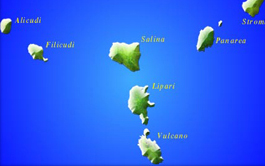 Isole Eolie (Distance: one hour by car plus 20 minutes by hydrofoil to Vulcano)
Isole Eolie (Distance: one hour by car plus 20 minutes by hydrofoil to Vulcano)
The Eolie islands get their name from Eolo, god of the winds, who according to Homer had his reign here. They are islands of many surprises and contrasts. Those who approach the islands today, either by boat or hydrofoil, can’t help but be overwhelmed by the magnificence of the landscape nor resist the temptation to explore it. “Lovely Islands”: in the course of the millennium their dimensions and appearance have been modified many times by volcanic eruptions. The coastline and the seafloor are amazing but the interior is also rich with fascination: impressive volcanoes which are always active especially in Stromboli with its spray of fire, bizarre rock formations, dense vegetation in Salina, prehistoric villages of Lipari, Panarea and Filicudi and the archeological treasures, carefully preserved in the Archeological Museum of Lipari, which the sea has returned.
Islands of wind and sun that have forged the character and identity of the islanders. In spite of the events of history and the changes imposed by the modern world, this identity has survived with its customs and traditions. The Eolians are kind and courteous people who receive you with great warmth.
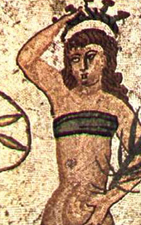 Piazza Armerina
Piazza Armerina
(Distance: Two hours and thirty minutes by car)
Piazza Armerina lies 721 meters above the Erei Mountains about 30 km from Enna. The historic center of Piazza Armerina is dominated by Castello Aragonese and the Duomo, and is easily visible from the nearby localities. The name is derived from the Latin medieval Platea (plaza of the marketplace), to which in 1862 was added Armerina (castrum armorum) for the fortified center of the Normans “castle of the army”, built in the XI century. In this region “Gallo – Italico” is spoken, which is a special Lombard – Sicilian dialect. This is the result of the Lombard immigration during the Norman period. The most illustrious and most extraordinary monument of Piazza Armerina are the large mosaics of the Villa Romana of the IV century after Christ. Another reason for which Piazza Armerina attracts many tourists is the Palio (horse race) of the Normans that takes place the 13th and 14th of August.
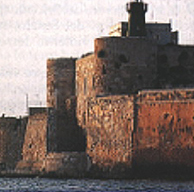 Siracusa
Siracusa
(Distance: two hours by car)
Siracusa is amongst the most illustrious cities of Sicily in terms of artistic history.The old city occupied an area larger than that of today. The first nucleus was on the island of Ortigia but soon the city extended on to the mainland where around the center of the marketplace the wealthy quarter of Acradina developed. To this quarter the Neapoli (new city) was added, where the Teatro Greco and the Tiche rise to the northeast. The rocky highland where Castello Eurialo rises was called Epipoli, in which the latomie were located in the southern part. These were the stone caves where they got the materials to build the monuments of Siracusa. This area was later transformed into luxurious gardens. The island of Ortigia is the heart of old Siracusa, which can be visited on foot. It is better to visit this area at night in order to admire the characteristic small streets that are illuminated by wrought iron lamps and to enjoy the local dishes at a typical trattoria.
Acireale
(Distance: 30 minutes by car)
Acireale “The Riviera dei Ciclopi” one of the most beautiful of Sicily,
extends for about ten kilometers in front of a clear and clean sea scattered with picturesque towns and villages that still have not completely lost their wild beauty. Easily reachable from Messina or Catania, Acireale, which was destroyed by an earthquake in 1693, has a 17th century look. The most important art forms are inspired by religion: the most beautiful monuments are the Chiesa di San Sebastiano and the basilica of the Santi Pietro e Paolo. This last one is a pure 16th century construction that survived the earthquake. In the two churches you can admire the frescos, which are of notable value, of P. Vasta, a painter (from Acireale) of the 17thcentury. Leaving Acireale one proceeds toward Aci Trezza and Aci Castello. It was at Aci Trezza that the tales of Giovanni Verga “I Malavoglia” took place. It was also here that the astute Ulyssees landed during his journey returning from Itaca and where he forced, after having blinded him, the angry Cyclops Polifemo to throw 14 enormous stones, which where detached from the mountain (I faraglioni) in the sea, in front of the town. Not far from Aci Trezza lies Aci Castello. Its own name indicates the characteristic of this other fishing village. The inlet of the port extends into a high headland on which rises a medieval castle. The castle, built on a rock shelf, was destroyed in 902 by the Saracens and they themselves rebuilt it in 906. It was taken over by the Normans after the year 1000 and donated to the bishop of Catania. In 1126 it housed the sacred relics of S. Agata, coming from Constantinople directly to Catania. In the frightening eruption of 1169 the lava from Etna collided with the castle attaching it to the mainland.

